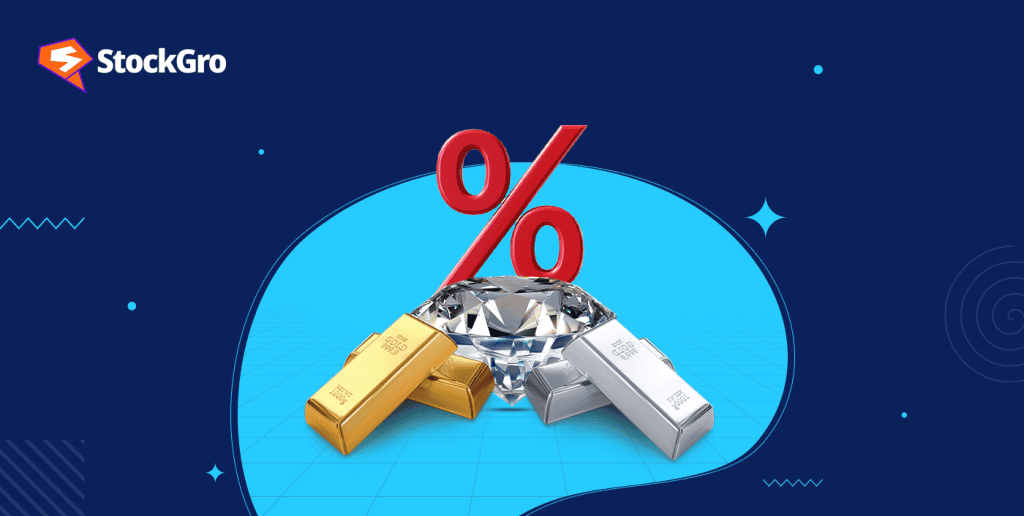
A capital asset refers to a tangible or intangible commodity that generates returns. The returns generated from capital assets are called capital gains. Capital gains are classified as LTCG and STCG.
Returns generated from selling assets owned for not more than 36 months (for assets purchased before 23rd July 2024) or 24 months (after 23rd July 2024) are called short-term capital gains. Similarly, the returns generated from assets that are not short-term are called long-term gains.
Jewellery is considered a capital asset. Therefore, income tax rules are applicable on the LTCG and STCG generated through the sale of jewellery made of gold, diamond and silver.
Limit on holding jewellery
Before getting into the income tax rules, individuals need to understand that there are certain restrictions on the amount of gold held by individuals.
There is no limitation on owning gold jewellery if there are valid revenue sources and the taxpayer can clarify the origin through evidence like a cash memo. This source also includes gold gained through inheritance.
However, there is a limit on the amount of jewellery that each individual may own without having to clarify the source of the gold.
| Married women | 500gms |
| Unmarried women | 250gms |
| Men | 200 gms |
Also read: Gold Outshines Equities in 2024: A Look at the Drivers.
Income tax rules on selling gold
When individuals sell gold, they have to incur taxes on the gains earned. Following are the income tax rules applicable to the most commonly owned and known forms of gold.
- Physical gold
Indians mostly purchase gold in this form. Other than jewellery and ornaments, physical gold is found in the form of coins, biscuits and much more. The income tax rate applicable to physical gold varies with the long-term and short-term nature of the capital gain.
LTCG
If the gold was sold before 23rd July 2024, a 20% tax is applicable after indexation. However, if it is sold after 23rd July 2024, a 12.50% tax is applicable without any indexation.
STCG
STCG applies only to gold purchased within two years. The gain from selling such gold is taxed based on the tax slab under which individual income falls.
A new-age method of owning gold is in its electronic form. Rather than investing in physical gold that attracts heavy making charges, digital gold is purchased online and stored in vaults. Bodies like the RBI and SEBI regulate these forms of investment. The income tax rules applicable to digital gold are the same as those applicable to physical gold.
Also read: Digital gold vs physical gold: Find out which is the better buy.
Income tax rules on selling other kinds of jewellery
The jewellery made from other precious materials like diamond and silver also comes under capital assets. If jewellery is sold within 24 months of purchase, the gain is categorised as a short-term capital gain. In any other case, it is termed as a long-term capital gain.
Before getting into the tax slabs, it is necessary to make a key point clear. Luxury items have a different and higher tax structure. However, that categorisation is necessary when calculating tax at the time of purchase. During the sale, the proceeds are categorised either as LTCG or STCG.
Therefore, the tax rates applicable to gold and silver jewellery are the same as those applicable to gold jewellery.
| LTCG | Sold after 24 months of purchase | 12.5% without indexation (after 23rd July 2024). |
| STCG | Sold within 24 months of purchase | The rate of tax varies with individual income tax slab. |
Also read: How section 112A of Income Tax Act can boost your long term capital gains?
Reducing tax liability
There is a difference between tax evasion and tax planning. While tax evasion refers to the fraudulent means of reducing tax liability, tax planning refers to the process of reducing tax burden through optimum financial planning. This is done through a careful study of tax laws and exemptions. The following are two ways of reducing the tax burden on the sale of jewellery.
- Purchase of property
Exemptions refer to the provisions provided in law aimed at the deduction of tax liability. If the gains earned from the sale of gold, diamond or silver jewellery are reinvested in a residential house with a specific period, LTCG tax on jewellery can be exempted.
- Basic exemption limit
Moreover, a resident can set off their capital gain if their other income (excluding the LTCG) falls below the exemption limit. Under the new tax regime, the exemption limit is ₹ 3 lakhs. It is irrespective of age. Under the old tax regime, the exemption limit is determined by age.
Conclusion
Gold, diamond and silver jewellery are more than just investments. Especially in India, these ornaments hold great emotional value. However, the prices of these precious metals and stones are ever-rising. Gold and silver are the prime examples of this phenomenon. However, the advent of the new tax policy and subsequent removal of indexation confused investors and the populace in general.
It is important to note that the elimination of indexation is followed by a fall in the tax rate. Moreover, prudent financial planning and a keen understanding of tax laws can help individuals reduce their tax liability. There are various ways in which an individual can reduce their tax burden.
FAQs
- Is gold taxable in India?
Yes, selling or purchasing gold is taxable in India. Before the 2024 budget, selling gold attracted an overall tax of 20.8%. However, after the 2024 budget, the tax rate is reduced to 12.05%. Indexation is removed. Inflation refers to the process of adjusting the value of an asset with the prevailing inflation rate.
- Will selling diamond jewellery incur a luxury tax rate?
Since diamond jewellery may easily fall under luxury goods, its purchase will come under the tax rate applicable to luxury goods. However, the gain attained from the sale of such jewellery is categorised as a capital gain. It would attract taxes depending on the long-term and short-term nature.
- What is the new income tax rule on gold?
The new income tax rule has reduced the threshold of the holding period from 36 months to 24 months. If a gold item is held for more than 24 months, gains derived from its sale are termed LTCG. If the purchase is within 24 months, it is categorised as STCG. LTCG attracts tax at the rate of 12.5% without indexation. STCG tax is determined based on the tax slab.
- What is indexation?
Indexation helps in preventing the reduction of returns by accounting for inflation. Indexation is the process of adjusting the purchase price of an asset with the prevailing inflation rate. Indexation lowers the amount of long-term capital gain. Thus, reducing the tax liability.
- How can I sell gold for the most money?
The rate of gold continuously fluctuates. The best way to maximise returns from gold sold is by continuously monitoring the prevailing gold rates. Individuals might try to sell gold at a price point that will maximise their gain. Moreover, gains derived from selling gold attract capital gains tax. Prudent tax planning will help maintain an optimal return amount.

